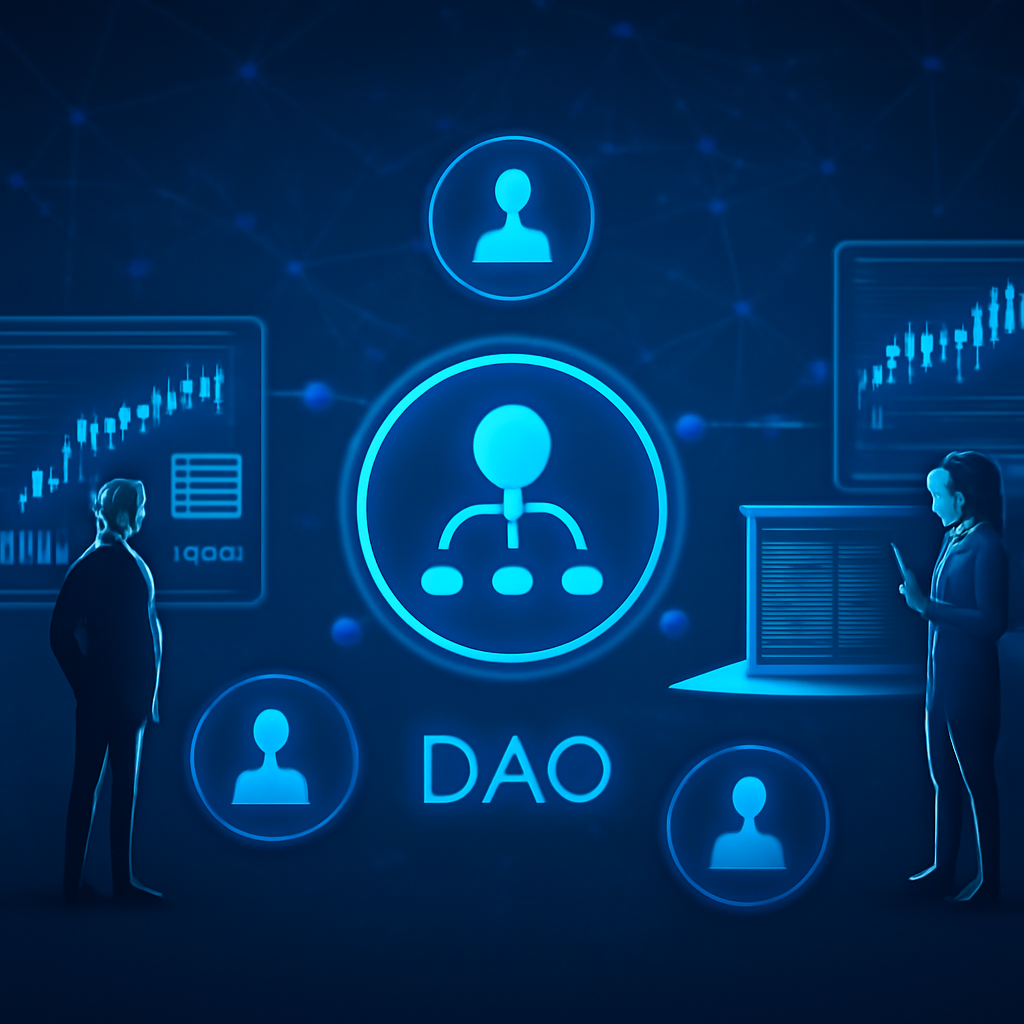How Decentralized Autonomous Organizations (DAOs) Work
Decentralized Autonomous Organizations (DAOs) represent a pioneering shift in governance structures enabled by blockchain technology. At their core, DAOs are entities run by smart contracts that automate decision-making processes through transparent and immutable code. The essence of DAOs lies in their decentralized nature, allowing stakeholders to participate in governance via token-based voting mechanisms. Each token held grants the owner a voice in crucial decisions, aligning incentives and fostering communal responsibility. This framework has revolutionized how organizations are structured and operated, minimizing the need for centralized authority.

The historical context of DAOs is marked by both innovation and caution. The infamous DAO hack in 2016, which exploited vulnerabilities in its smart contracts, resulted in the loss of $60 million worth of Ether and highlighted the vulnerabilities in DAO structures. This incident prompted heightened scrutiny from regulatory bodies, leading to calls for clearer guidelines around DAO operations. Fast forward to 2024, a recent survey revealed that DAOs are managing over $20 billion in assets globally, demonstrating significant growth and resilience despite past challenges. Prominent operational frameworks include diverse governance structures, with on-chain models relying on blockchain consensus, while off-chain methods may involve traditional voting systems. Notable DAOs such as MakerDAO and Aave exemplify varying governance models, with MakerDAO leveraging a two-token system to manage its DAI stablecoin effectively and Aave employing a community-driven approach for protocol upgrades.
The technical infrastructure supporting DAOs primarily revolves around blockchain platforms, with Ethereum maintaining a substantial lead, hosting over 70% of active DAOs. Ethereum’s robust infrastructure offers a mature ecosystem for DAO development, characterized by extensive developer resources and community support. However, emerging platforms like Avalanche and Solana are gaining traction due to their scalability and lower transaction costs, which appeal to new DAOs aiming for rapid growth without the congestion often seen on Ethereum. The flexibility offered by these newer networks may catalyze a diversification of DAOs, potentially reshaping market dynamics as they compete for developer attention and user base.

Smart contract security remains paramount in establishing trust within the DAO ecosystem. Rigorous testing and third-party audits are essential to ensure the integrity of contracts, as evidenced by the stark contrast between successful audits, which bolster confidence, and failures that can lead to significant losses. The role of formal verification is increasingly recognized as a critical component in risk mitigation, offering mathematical proofs of correctness for smart contracts. Additionally, the tokenomics employed by DAOs—ranging from governance to utility tokens—plays a crucial role in incentivizing participation and aligning stakeholder interests. Current trends indicate a growing focus on liquidity provision within DAOs, which not only enhances market dynamics but also opens avenues for innovative financial instruments within the decentralized landscape.
As of Q1 2024, market sentiment surrounding DAOs is notably bullish, fueled by increasing awareness and acceptance of decentralized governance models. Sentiment analysis tools and data from social platforms indicate a rising interest, with recent surveys revealing that 60% of institutional investors now view DAOs as viable investment vehicles. This shift in perception reflects a broader trend of institutional engagement with decentralized technologies, as organizations seek to capitalize on the efficiencies and transparency offered by DAOs. Community dynamics play an essential role in this ecosystem, as governance success is intricately tied to community involvement. A case study highlighting Gitcoin illustrates how community-driven funding can thrive within DAO structures, providing valuable insights into effective engagement strategies.

However, challenges persist in community engagement, particularly regarding participation rates and voter turnout in governance proposals. Many DAOs struggle with active participation, as evidenced by turnout rates often hovering below 20%. To enhance engagement, strategies such as incentivized voting mechanisms and educational initiatives are being explored. These measures aim to foster a more informed and active community, driving meaningful participation in governance processes. By addressing these challenges, DAOs can better harness the collective intelligence of their communities, thereby enhancing their operational efficacy and strategic direction.
Institutional interest in DAOs has surged, with capital allocation to DAOs reaching nearly $5 billion in 2024, marking significant year-on-year growth. This influx of institutional capital has been driven by hedge funds and venture capitalists identifying the potential of DAO-backed projects. Notable investments in infrastructure and protocol development signal a commitment to integrating decentralized governance within traditional finance frameworks. However, the evolving regulatory landscape poses both opportunities and challenges for institutional investment in DAOs. Recent developments across jurisdictions have introduced varying degrees of clarity regarding DAO operations, which can either bolster or hinder investor confidence. As regulatory frameworks continue to evolve, understanding their implications on market entry strategies will be crucial for institutional investors navigating this space.

Emerging DAO investment vehicles are also becoming increasingly relevant, as the concept of DAOs evolves into a distinct asset class. The introduction of DAO-focused funds and exchange-traded funds (ETFs) allows institutional investors to gain exposure to a diversified portfolio of DAO assets. Performance metrics from these instruments reveal that DAO investments are beginning to outperform traditional assets, which could further entice institutional allocations. This trend indicates a maturation of the DAO ecosystem, as it becomes a legitimate consideration for diversified investment strategies.
Looking ahead, the future of DAOs appears poised for exponential growth, with projections suggesting they could manage over $100 billion by 2026. The anticipated integration of artificial intelligence and machine learning into DAO governance could further enhance decision-making processes, enabling more adaptive and efficient organizations. Nonetheless, potential risks loom on the horizon, particularly concerning regulatory hurdles that may stifle innovation and security vulnerabilities that necessitate evolving best practices. In this broader crypto ecosystem, DAOs stand to play a pivotal role in advancing decentralized finance (DeFi) and Web3 initiatives, while potential collaborations with traditional enterprises could bridge the gap between centralized and decentralized governance models.

As DAOs continue to evolve and integrate into the financial fabric of society, their impact on investment strategies and market dynamics will be profound, necessitating ongoing analysis and adaptation from institutional investors.
